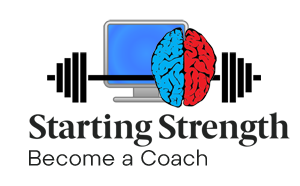
Originally Posted by
Heisenberg

Hi Mark,
another great article which describes the concepts of training and practice. I have one question concerning the concept of training with respect to conditioning. You say: "Training is the process of accumulating a specific physiological adaptation or adaptations necessary for improved performance in an athletic event. ... These physiological adaptations are not dependent on any specific movement pattern or patterns – in fact, they are general adaptations across the entire body, and are totally non-specific to any particular neuromuscular pattern or pathway."
In terms of training for strength this is totally plausible but in terms of training for endurance the best possible training shoulde be performing the given sport (as you also state further down using soccer as an example). Therefore obtaining the physiological adaptations of a given sport is best done by performing the specific movement patterns of that sport. In other words, there are no analogue non-sport specific movements like Squats, DL, Press, and Bench Press for endurance training as running or cycling will not yield the optimal physiological adaptation for Basketball, Soccer or even Table Tennis. So is there a conceptual difference in training for endurance and training for strength in terms of specificity?










